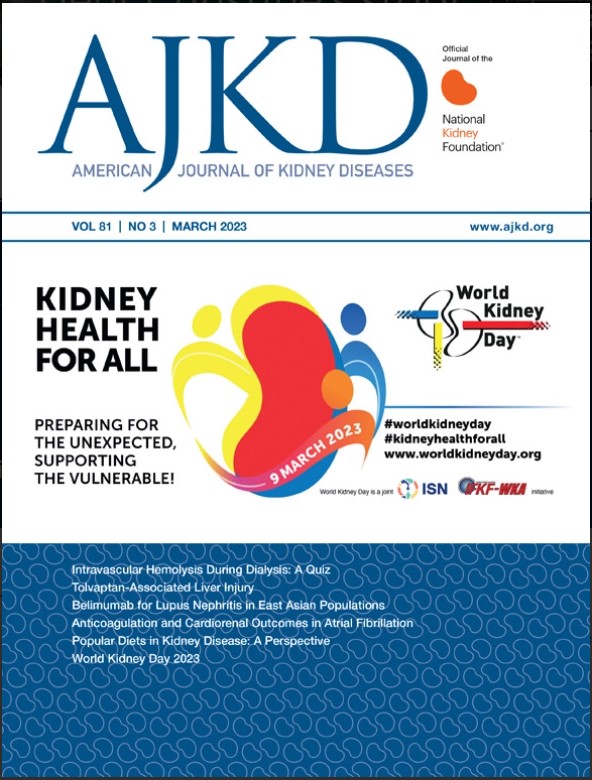TSC2/PKD1 Contiguous Gene Deletion Syndrome: A Case Series
IF 8.2
1区 医学
Q1 UROLOGY & NEPHROLOGY
引用次数: 0
Abstract
Rationale & Objective
TSC2/PKD1 contiguous gene deletion syndrome (CGS) has been associated with a more severe kidney phenotype than observed in autosomal dominant polycystic kidney disease (ADPKD), displaying childhood onset and progression to end-stage kidney disease (ESKD) within the first 3 decades of life. Because recent case reports have suggested a more variable clinical course, we characterized a series of patients with CGS.
Study Design
Case series.
Setting & Participants
Eleven patients and a clinically unaffected individual from two CGS pedigrees.
Findings
The pedigree patients presented with widely variable kidney survival, with 2 reaching the fourth decade of life without ESKD even in the absence of mosaicism. The median age of individuals who developed ESKD was 22.5 (IQR, 20-25) years, whereas the median age among those who did not develop ESKD was 25.5 (IQR, 25-35) years.
Limitations
Retrospective study, limited number of patients with complete clinical data. Possible incomplete evaluation of tuberous sclerosis complex (TSC) clinical features.
Conclusions
Patients with CGS have a variable clinical course and may reach ESKD later than previously reported, even in the absence of mosaicism. Some patients with CGS may have a kidney phenotype similar to severe ADPKD. Other patients with CGS may have TSC manifestations associated with severe progression of cystic kidney disease but not as fast as previously expected for CGS.
Plain-Language Summary
The TSC2/PKD1 contiguous gene deletion syndrome (CGS) includes features of tuberous sclerosis complex (TSC) and autosomal dominant polycystic kidney disease (ADPKD). It has been associated with fast progression to end-stage kidney disease (ESKD) in children and young adults, but more recent data suggest a more variable clinical course. This case series, including 12 CGS-affected individuals, brings key information to the characterization of this disorder’s clinical spectrum and natural history. This case series revealed a widely variable kidney prognosis even among patients with the same deletion, with the age of ESKD onset in milder cases overlapping with severe cases of ADPKD. CGS should, therefore, be considered in patients diagnosed with severe ADPKD who are apparently not presenting TSC manifestations as well as in patients diagnosed with TSC with severe progression of cystic kidney disease.
TSC2/PKD1连续基因缺失综合征:一个病例系列
TSC2/PKD1连续基因缺失综合征(CGS)与常染色体显性多囊肾病(ADPKD)中观察到的更严重的肾脏表型相关,表现为儿童发病,并在生命的前30年内进展为终末期肾病(ESKD)。由于最近的病例报告表明临床病程变化较大,我们试图对一系列CGS患者进行特征分析。
本文章由计算机程序翻译,如有差异,请以英文原文为准。
求助全文
约1分钟内获得全文
求助全文
来源期刊

American Journal of Kidney Diseases
医学-泌尿学与肾脏学
CiteScore
20.40
自引率
2.30%
发文量
732
审稿时长
3-8 weeks
期刊介绍:
The American Journal of Kidney Diseases (AJKD), the National Kidney Foundation's official journal, is globally recognized for its leadership in clinical nephrology content. Monthly, AJKD publishes original investigations on kidney diseases, hypertension, dialysis therapies, and kidney transplantation. Rigorous peer-review, statistical scrutiny, and a structured format characterize the publication process. Each issue includes case reports unveiling new diseases and potential therapeutic strategies.
 求助内容:
求助内容: 应助结果提醒方式:
应助结果提醒方式:


